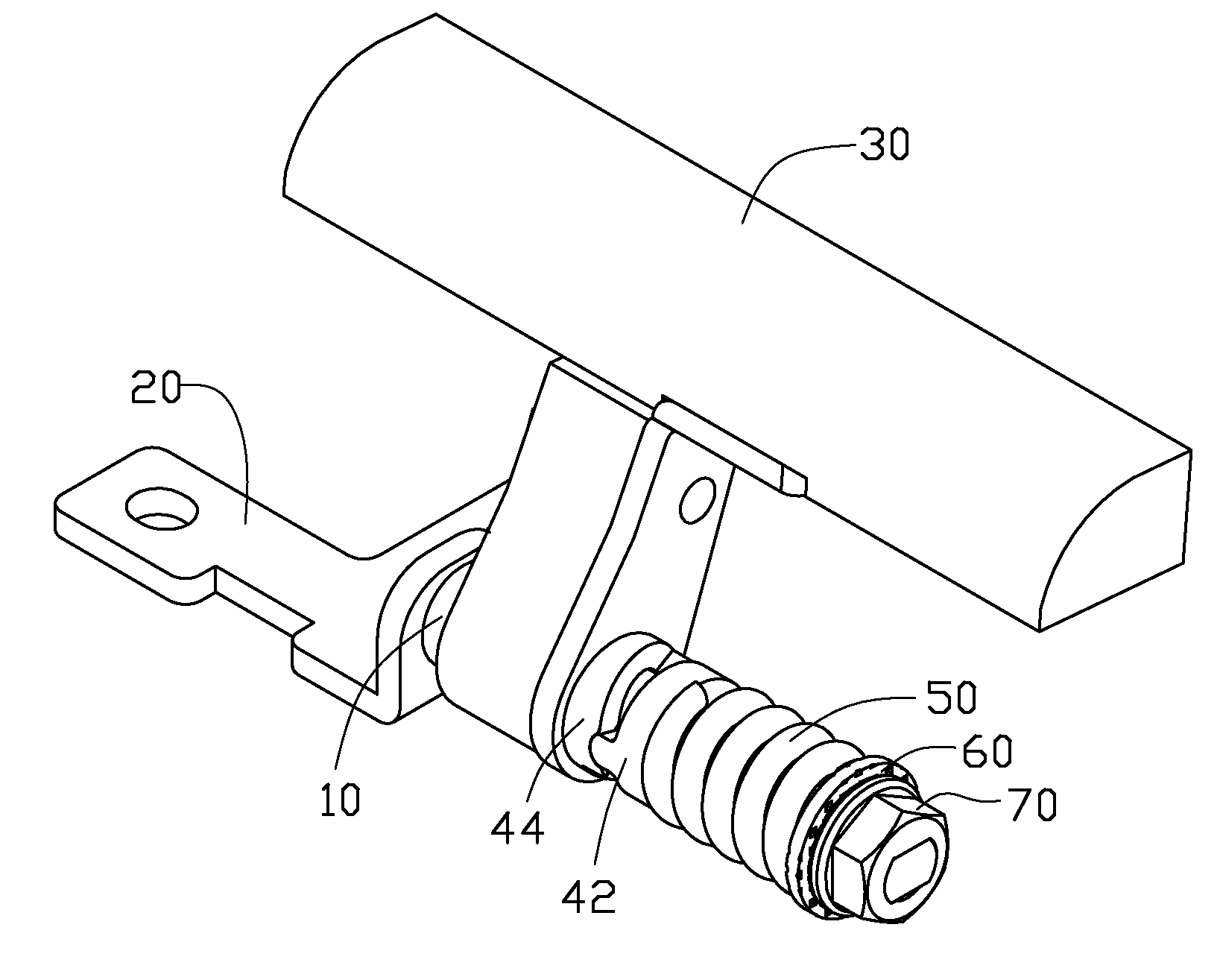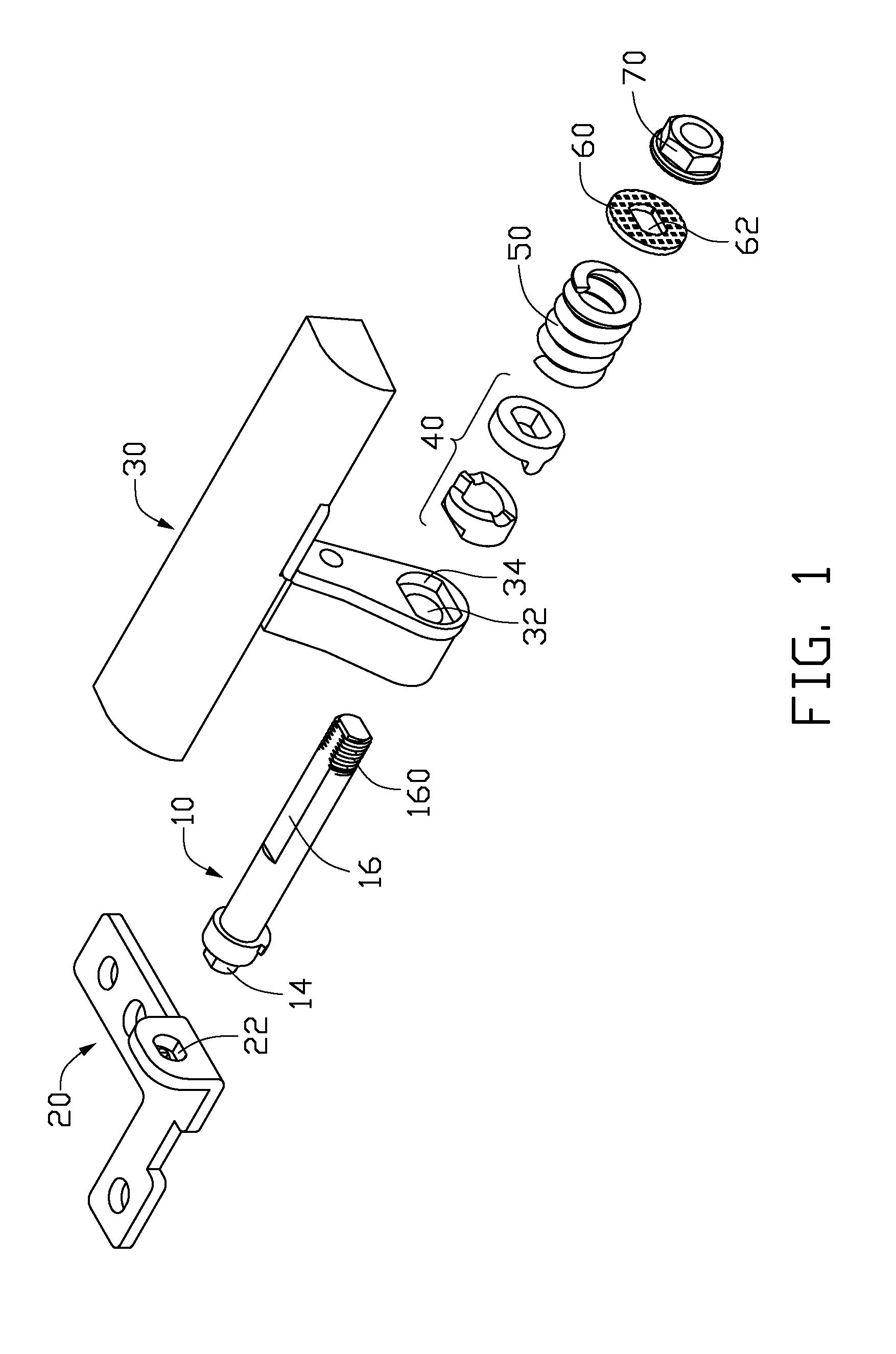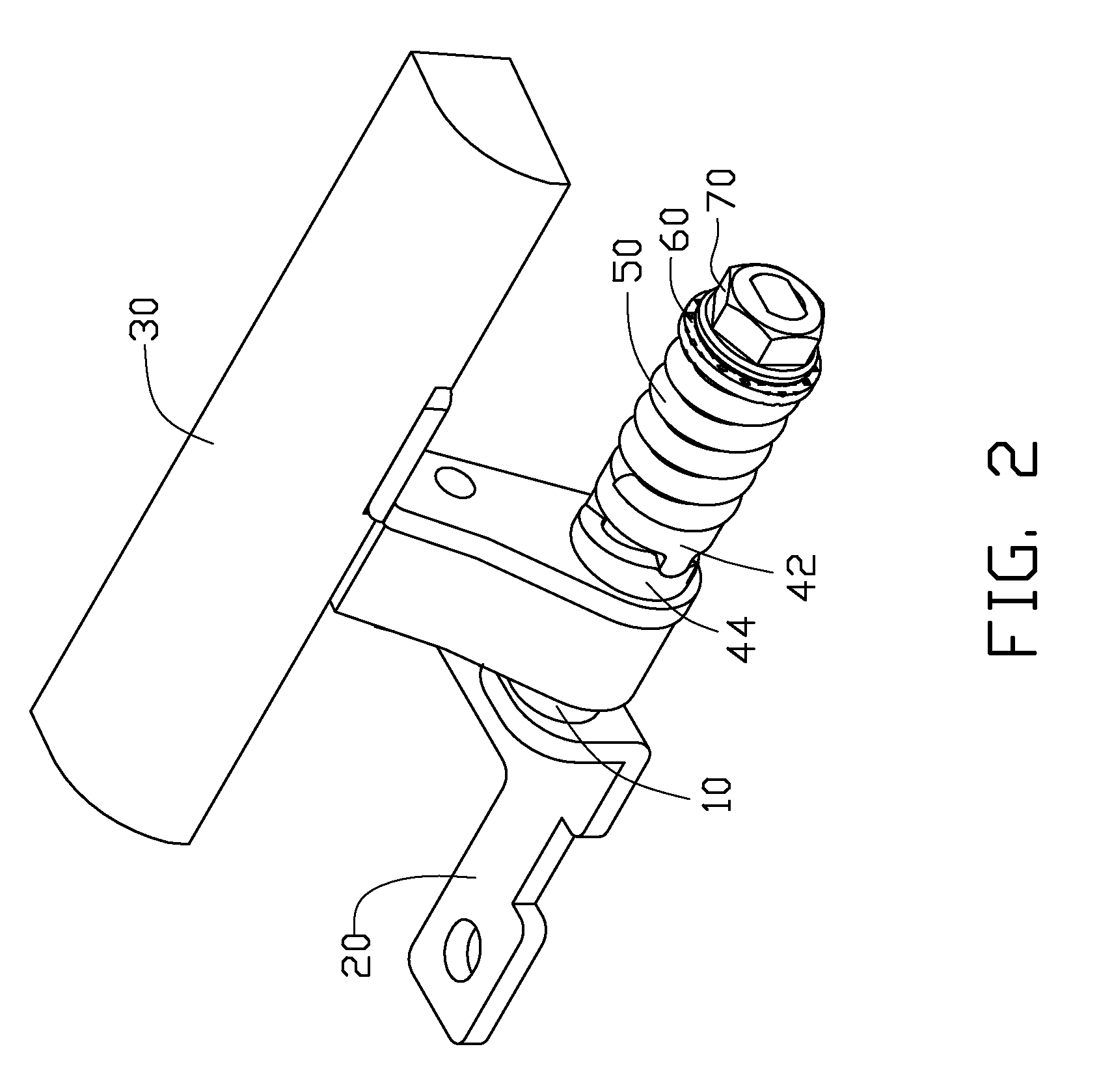Interference assembly, hinge utilizing the same, and collapsible device utilizing the hinge
- Summary
- Abstract
- Description
- Claims
- Application Information
AI Technical Summary
Benefits of technology
Problems solved by technology
Method used
Image
Examples
Embodiment Construction
[0012]Referring to FIGS. 1 through 3, a hinge of an embodiment includes a shaft 10, a first bracket 20, a second bracket 30, an interference assembly 40, a resilient member 50, a washer 60, and a fastener 70. In this embodiment, the fastener 70 is a nut, and the resilient member 50 is a coil spring defining a through hole.
[0013]The shaft 10 includes a non-cylindrical conjoining portion 14, and a non-cylindrical post 16 opposite thereto. A distal end of the post 16 forms a threaded portion 160.
[0014]The first bracket 20 defines a non-circular fastening hole 22.
[0015]The second bracket 30 is T-shaped and defines a depressed portion 34 in a side of a lower part, facing the interference assembly 40. A circular through hole 32 is defined in the lower part of the second bracket 30, extending through a bottom of the depressed portion 34 and out the opposite side of the lower part.
[0016]The interference assembly 40 includes a first element 42, and a second element 44 engaging and rotating r...
PUM
 Login to View More
Login to View More Abstract
Description
Claims
Application Information
 Login to View More
Login to View More - R&D
- Intellectual Property
- Life Sciences
- Materials
- Tech Scout
- Unparalleled Data Quality
- Higher Quality Content
- 60% Fewer Hallucinations
Browse by: Latest US Patents, China's latest patents, Technical Efficacy Thesaurus, Application Domain, Technology Topic, Popular Technical Reports.
© 2025 PatSnap. All rights reserved.Legal|Privacy policy|Modern Slavery Act Transparency Statement|Sitemap|About US| Contact US: help@patsnap.com



